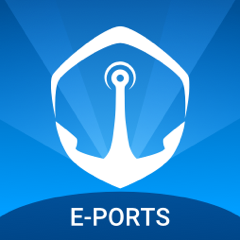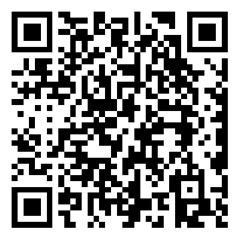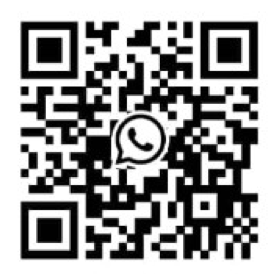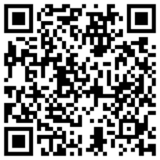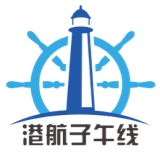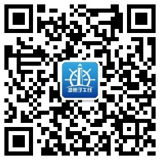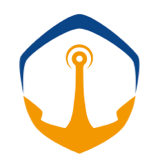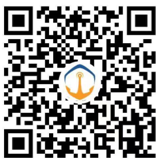South Korean ship sinks, leaving 12 missing and 2 dead 刚刚!韩国船只沉没!12人失踪!2人死亡!
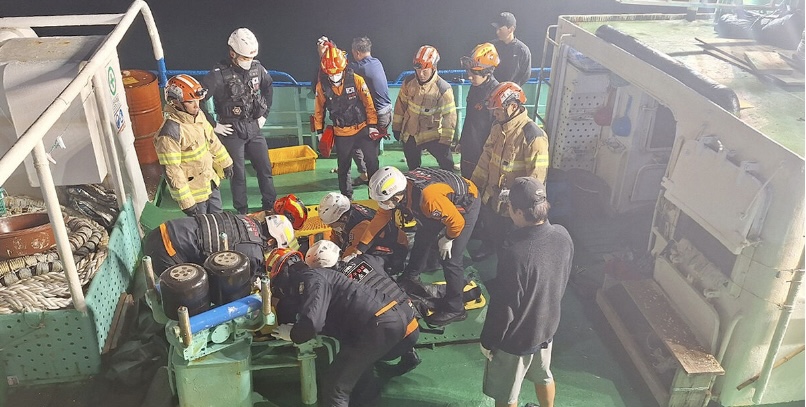
Image Credit: the Internet
图片源于网络
On the early morning of November 8th, a fishing boat sank in the waters off Jeju, South Korea. A Busan-registered fishing boat sank 24 kilometers near Feiyang Island. The 129-ton fishing boat carried 27 people, including 16 South Koreans and 11 foreigners.
11月8日凌晨,韩国济州海域发生渔船沉没事故,一艘釜山籍渔船在飞扬岛附近24公里处沉没,这艘129吨重的渔船上载有27人,包含16名韩国人和11名外国人。
According to South Korean media reports, 15 out of the 27 people were rescued, with 2 confirmed dead. The 12 missing people include 10 South Koreans and 2 foreigners. The Coast Guard has dispatched 18 vessels and 5 aircraft to the site to participate in the search and rescue operation.
据相关韩媒报道称,在这27人中,有15人被救出,其中2人死亡。失踪的12人包括10名韩国人和2名外国人。海岸警卫队已派出 18 艘船只和 5 架飞机前往现场参与搜救行动。
Reports indicate that the South Korean Coast Guard confirmed that the boat capsized suddenly while crew members were transferring the fishing cargoes to a transport ship, eventually sinking completely. The search and rescue operation is still ongoing. In this rough sea area, it is hoped that the rescuers can find the missing crew members as soon as possible while ensuring their own safety.
报道称,韩国海警经查确认,船员将渔获物搬运至运输船的过程中,船体突然倾覆,最终完全沉没。目前,搜救工作仍在进行中。在这片波涛汹涌的海域,希望搜救人员能在确保自身安全的情况下尽快找到失踪船员。
Maritime Search and Rescue Methods
海上搜救方式
When a vessel or crew encounters an accident at sea and sends out a distress signal, the maritime search and rescue center will receive the alert immediately and activate emergency plans to conduct search and rescue operations. However, due to the vast sea, accident vessels that are tens of meters or hundreds of meters long are like a grain of sand in the desert at sea, making maritime search and rescue extremely difficult. Here are several common maritime search patterns.
当船舶、船员在海上发生事故,发出遇险报警,海上搜救中心会在第一时间接警,并立即启动应急预案,全力开展搜寻救助。但由于海域面积太大,十几米和几百米长的事故船舶在海上就如在沙漠的一粒沙,海上搜救难度非常大,下面是几种常见的海上搜寻模式。
1.Sector Search. When the search target's position is accurate or the search area is small, the sector search is the most effective method. The sector search radius is usually between 2-5 nautical miles, and each turning angle is 120°. Typically, sector searches always turn to the right. It is commonly used when one crew member sees another falling overboard.
1.扇形搜寻。当搜寻目标的位置准确或搜寻区域较小时,扇形搜寻是最有效的方式。扇形搜寻半径通常在2-5海里之间,每次转向角是120°。通常,扇形搜寻每次都是向右转向。常用于一个船员看见另一个船员从船上掉出舷外。
2.Expanding Square Search. When the search target is in a relatively close area, the expanding square search method is also very effective. It is often used for vessels or small boats searching for people overboard or other search targets.
2.扩展方形搜寻。当搜寻目标位置处于相对较近的区域时,扩展方形搜寻方式也是最有效的。常适用于船舶或小艇搜寻落水人员或其他搜寻目标的行动。
3.Track Line Search. When an aircraft or vessel goes missing while flying or sailing from one point to another, the track line search method is usually chosen. This search method is often used for initial searches.
3.航迹线搜寻。当航空器或船舶从一点飞向或驶向另一点的途中失踪时,通常选用航迹线搜寻方式。这种搜寻方式经常被用于先期搜寻。
4.Parallel Sweep Search. When the survivor's position is very uncertain and a uniform coverage of a vast area is required, this search method is typically used. The coverage area of parallel line search is rectangular.
4.平行线扫视搜寻。当幸存者位置很不确定并要求均匀覆盖一广阔区域时,通常使用此搜寻方式。平行线搜寻的覆盖区域为矩形。
5.Creep Line Search. Apart from the search route being parallel to the short side rather than the long side of the rectangle, the creep line search method is essentially the same as the parallel sweep search.
5.横移线搜寻。除了搜寻路线平行于矩形的短边而不是长边外,横移线搜寻方式与平行线扫视搜寻基本一样。
How do large steel structures like ships turn and change direction skillfully? Next, we introduce several common ship turning methods.
船舶这么大的钢铁之躯是如何灵巧地实现转弯换向呢,接下来介绍几种船舶常见的旋回方式。
1.Single Turn. After discovering someone has fallen overboard, immediately steer full rudder to the side where the person fell overboard. When there is still a 20° angle to the person, steer straight and stop the ship urgently. If it is difficult to visually identify the position of the person overboard, then when the course change is 250°, steer straight, stop the ship, and try to find the person overboard. This method is the most effective emergency steering method for rescuing someone who has just fallen overboard and is the fastest rescue speed.
1.单旋回。发现有人落水后,立刻向落水者一舷满舵,距离落水人员尚余下20°舷角时操正舵并紧急停船;如果难以通过视觉辨认落水者位置,则应该在改变航向250°时正舵,一边停船一边努力寻找落水人员。该方法是救助刚刚落水者而紧急操船的最有效方法,救助速度最快。
2.Williamson Turn. After discovering someone has fallen overboard, immediately steer full rudder to the side where the person fell overboard. When the bow turns 60°, change to full rudder on the other side, and when the bow is 20° away from the reverse course, steer straight and hold the reverse course. This can accurately bring the ship to the position of the person overboard. It is an effective steering method for approaching the person overboard at night or in poor visibility, applicable when the person overboard is discovered early and can be identified at sea. But this method takes longer.
2.威廉逊旋回。在发现有人落水后,立即向落水者一舷操满舵,当船首转过60°后,改操另一舷满舵,至距反航向差20°时正舵,把定反航向,能够准确地把船舶带到落水者的位置;在夜间或能见度不良时是有效接近落水者的操船方法,在发现落水人较早并可在海上视认时适用;该法的所需时间较长。
3.Scharnow Turn. Steer full rudder to any side, when the bow turns 240°, change to full rudder on the other side, and when the bow turns 20° away from the reverse course of the original course, steer straight and hold the reverse course.
3.斯恰诺旋回。向任一舷操满舵,当船首转过240°后,改操另一舷满舵,当船首转到离原航向之反航向差20°时正舵,把定反航向。
In addition to search and rescue methods, rescue equipment is also essential. First, there are multifunctional life-saving climbing nets and ladders. They can be hung on both sides of the boat or thrown into the water for people overboard to climb or float on the surface, and can also be lifted out of the water to a safe place with lifting equipment. However, when using climbing nets, it is important to place them on the leeward side, and the receiving personnel should tie a safety rope to help the physically weak person overboard board the ship. Next is the intelligent lifebuoy. It is a new type of lifebuoy. Throw the lifebuoy into the water, turn on the power, and you can drive the lifebuoy to the side of the person overboard through a remote control handle. It can save some time for rescuing people overboard and free up some rescue manpower.
除了搜救方法外,救助器材在搜救环节也必不可少。首先是多功能救生爬网和救生爬梯。可悬挂在船艇两舷或抛入水面,供落水人员攀爬或浮在水面,也可用起吊设备吊离出水到安全地方。但是使用爬网时要注意置其于下风舷,接应人员绑妥安全绳,接应体力不支的落水者登船。其次就是智能救生圈。它是一种新型救生圈,把救生圈抛到水中,打开电源,就可以通过遥控手柄将救生圈行驶到落水者的身边。它可为争取抢救落水者节约一定时间并解放部分救援人力。
Salvage Methods for Sunken Ships
沉船打捞方法
Different salvage methods can be used for different sunken ship situations.
在不同沉船情况,可以采用不同的打捞方法。
1.Buoyancy Salvage Method is to restore the buoyancy of the sunken ship to make it float above the water surface. Modern salvage ships use a floating pontoon salvage method to salvage sunken ships, which is to use the buoyancy provided by the salvage pontoons to lift the sunken ship out of the water. This method has a large and reliable buoyancy, convenient construction, and safety, so the pontoon salvage method is often used to salvage sunken ships. It is suitable for ships that have sunk in rivers, lakes, or shallow waters near the sea.
1.浮力打捞法就是让沉船恢复浮力,使沉船浮出水面。现代打捞船用一种浮筒打捞法打捞沉船,即利用打捞浮筒提供的浮力,把沉船打捞出水。这种打捞法浮力大而可靠,施工方便、安全,所以经常使用浮筒打捞法来打捞沉船。适用于沉没在江河或近海较浅水域的船只。
2.Floating Dock Salvage Method, which is to sink the floating dock to the seabed and connect it with the sunken ship. Use high-pressure air to press the water out of the floating dock's water compartments to a certain extent, and the floating dock will drag the sunken ship out. This method also needs to be coordinated with tugs, and some even make special equipment. It is suitable for sunken ships and objects in the deep waters of the open sea or the ocean.
2.浮船坞打捞法,是将浮船坞沉入海底和沉船系为一体,用高压空气将浮船坞水舱中的水压出,达到一定的程度,浮船坞就将沉船拖出。用此方法还需与拖船相配合,有的还制作专门设备。适用于远海或大洋深处水域的沉船和沉物。
3.When the ship sinks in a water area with a small depth, the cofferdam salvage method can be used. Build a cofferdam around the sunken ship, pump out the water inside the cofferdam, seal or repair the sunken ship, and then flood the ship to float it up before removing the cofferdam. It is suitable for salvage in small ponds.
3.当船沉于水深较小的水域时,可使用围堰打捞法。筑堰于沉船的周围,抽出堰内的水,将沉船封补或修复,再灌水将船浮起后拆除围堰。适用于在较小水塘的打捞。
4.For some sunken ships or objects that cannot be salvaged as a whole, disassembly salvage can be used. That is, use underwater blasting or cutting to decompose the sunken ship underwater, and then salvage it in sections or blocks. However, there are several points to note for this method. First, the fuel in the sunken ship and items that may pollute the water area must be removed before starting the disassembly operation. Second, after cutting the sunken ship into several sections with electric oxygen cutting or chain saw cutting, lift and salvage them in sections, with the heaviest block being less than the lifting capacity of the crane ship. If this sunken ship has no salvage value, such as a cement transport ship, and occupies the waterway, it does not need to be salvaged. It can be directly destroyed in the water with explosives to clear the waterway.
4.对于一些不能整体打捞的沉船、沉物,可以用解体打捞。即利用水下爆破或水下切割,把沉船在水下分解,再分段、分块打捞。但此方法有几点需要注意,首先,必须清除沉船内的油料及可能污染水域的物品后方可开始解体作业;其次,使用电氧切割或链锯切割法将沉船切割成数段后分段吊捞,其中最大块重小于起重船起吊能力。若这个沉船没有任何打捞价值,比如水泥运输船,又占据了航道,可不必打捞,直接在水中用炸药炸毁,以清理航道。
5.Large Floating Crane Salvage Method. After 1975, with the advent of floating cranes with lifting capacities of 300 tons, 500 tons, and even larger, some small sunken ships can be directly lifted.
5.大型浮吊吊捞法。1975年后,由于有了300吨、500吨以至更大吊重能力的浮吊船,对于一些小型沉船可以直接吊浮。
With the emergence of pontoons and large floating cranes, more and more comprehensive salvage methods are adopted. That is, in the process of salvaging a sunken ship, not only are pontoons used, but internal buoyancy is also used to seal the cabin and pump out water, and floating cranes are used to assist in lifting and floating.
现代随着浮筒和大型浮吊的出现,更多的时候是采用综合打捞法。即在打捞一艘沉船的过程中不仅要用浮筒,内浮力还要封舱抽水,用浮吊协助吊浮。
With the development of global economic integration and the booming shipping industry, maritime transportation is becoming increasingly busy, the number of ships is continuously increasing, and the number of crew members is also growing significantly. This has led to an increasing trend in the number of crew rescue incidents. The importance of professional rescue platforms is becoming more and more prominent. E-PORTS has rich experience in crew rescue and has successfully handled many emergency rescue cases. In July of this year, off the coast of Chile in the eastern Pacific, a crew member on a cargo ship suddenly fell ill. E-PORTS quickly coordinated a rescue team through digital means, arranged for the ship to stop at a nearby port for emergency docking, and the shore medical team was also ready. The crew member was sent to the intensive care unit for treatment as soon as he came ashore. Thanks to timely assistance, the crew member was finally out of danger and returned to China smoothly for follow-up treatment before the end of July.
随着全球经济一体化,航运业蓬勃发展,海上运输日益繁忙,船只数量不断增加,相应的船员数量也大幅增长,这使得船员救助事件在数量上有增多趋势。专业的救助平台的重要性日益凸显,E-PORTS拥有丰富的船员救助经验,曾成功处理多起紧急救助案件,今年7月在东太平洋智利沿岸,一艘货船上1名船员突发急病,E-PORTS通过数字手段,迅速协调救援团队,就近安排该船紧急停泊港口,岸上医疗团队也已准备就位,船员上岸后并第一时间送入重症监护室进行科学治疗。经过及时的救助,这名船员终于脱离了危险,并在7月底前顺利返回中国,接受后续治疗。
If you need crew rescue, you can contact 400-920-8810, and E-PORTS customer service is at your service 24 hours a day!
如果需要船员救助,您可联系400-920-8810,E-PORTS客服7*24小时为您服务!
